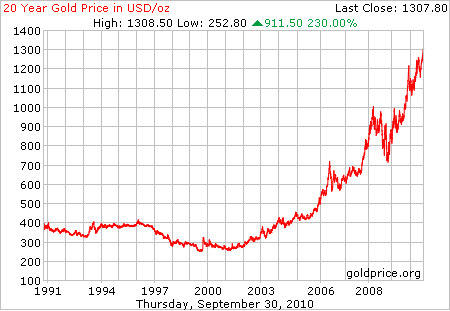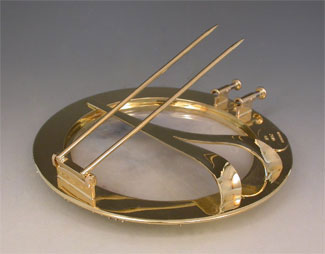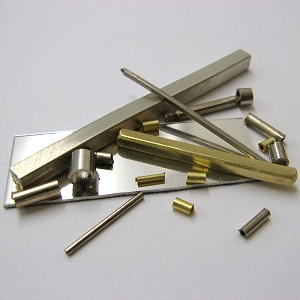 As gold prices pass the $1,300 per ounce mark, it might be useful to talk about the relationship between gold prices and the price of finished jewelry. In the late 1970s, during the first gold rush I can recall, prices seemed to go up every week culminating in a peak price of $850 per ounce in early 1979. During this period, we adjusted our prices weekly and often found ourselves raising the ticket price on finished pieces to keep up with our replacement cost.
As gold prices pass the $1,300 per ounce mark, it might be useful to talk about the relationship between gold prices and the price of finished jewelry. In the late 1970s, during the first gold rush I can recall, prices seemed to go up every week culminating in a peak price of $850 per ounce in early 1979. During this period, we adjusted our prices weekly and often found ourselves raising the ticket price on finished pieces to keep up with our replacement cost.
A Finished Piece of Handmade Jewelry Averages 70% labor, 30% gold:
After the peak things gradually calmed down and gold tended to trade between $350-500 for most of the next two decades. Gold is a material, in handmade jewelry it is normally 30% of the finished price. That means that 70%, on average, is the cost of the craftsman’s highly skilled labor. Paradoxically, the more handwork the less of a factor the actual materials become.
During the go-go late 70s some commercial manufactures thinking to take advantage of consumer awareness of high gold prices, began marketing gold jewelry by weight.
“Don’t worry, the gold is free!”
This was a problem for hand craftspeople. I recall be asked frequently to weigh handmade original pieces. At first I simply refused, but later I developed a standard response. “Don’t worry”, I would say smiling my most ingratiating smile, “the gold is free.” You can imagine the effect on the potential client, like a deer caught in the headlights, stunned speechless. It did provide an opening for me to launch into an explanation of the differences between commercial and handmade jewelry. Sometimes it worked, oftentimes it didn’t.
Using the international gold price to deduce the price of a piece of handmade jewelry is a bit like comparing the price of a wooden house to the cost of a tree. The fact is, no one pays the spot gold price quoted in the morning paper. Craftsmen do not buy ingots, they buy manufactured sheet and wire of a certain size, shape and fineness.
Nobody Pays The Spot Price:
The price of manufactured gold differs from the spot price in the same way that the price of a board foot of lumber differs from the price of a pine tree. It is , in fact, 20-35% higher. Then there is waste. Saw a 1″ circle from a 1″ square of gold sheet and you end up with a certain amount of dust and a few tiny, unusable corners. Unless the workshop generates a great deal of scrap it is not cost efficient to melt that scrap down, make an ingot and roll it out into sheet. We can do it in our workshop, but under 5-6 ounces it doesn’t pay. So the dust and scrap is returned to the refinery for cash or credit of roughly 95% of the spot price. Net loss, 35% of the price originally paid. Polishing then reduces the rough weight by about 10% to yield the lovely hand polished piece of jewelry you see on display.
So, the next time you are tempted to ask a craftsman to weigh a piece of fine handmade jewelry, remember that gold price has a nebulous relationship to a finished piece of jewelry, particularly handmade jewelry. Remember too, craftsmanship counts.


